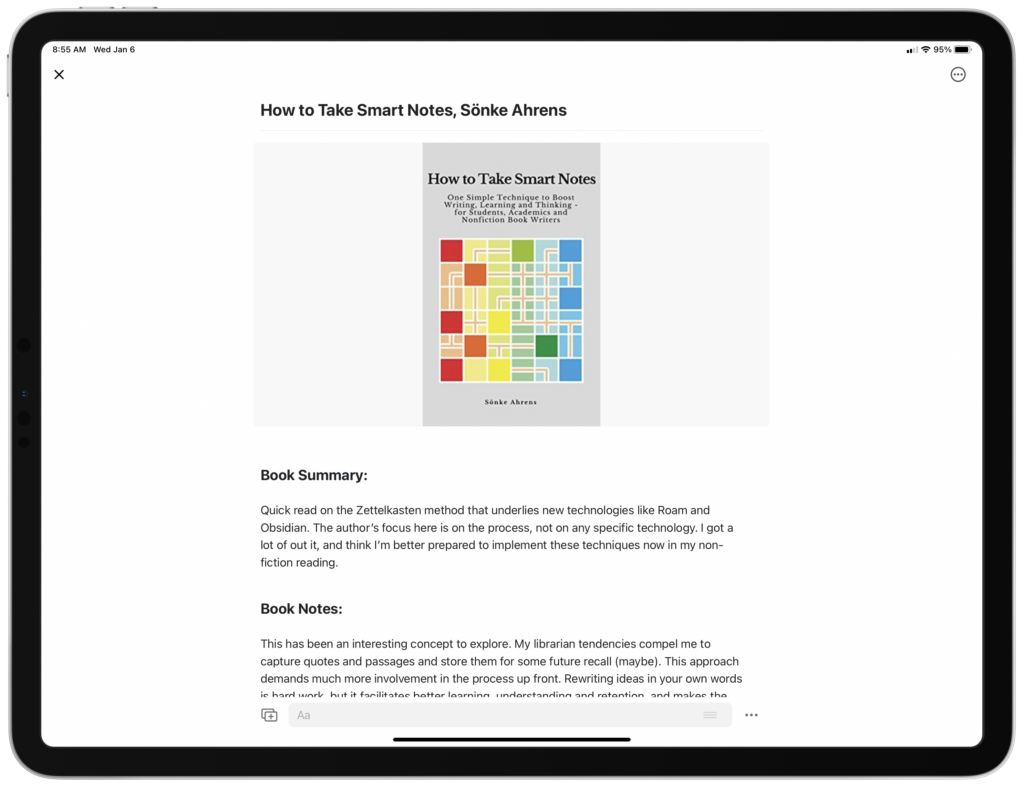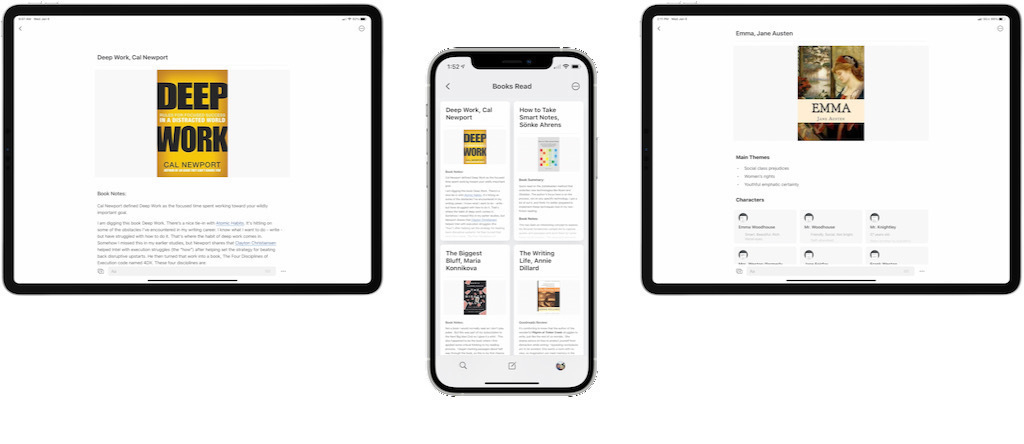The New Craft App Does More Than Keep Notes
About a month ago, I started using a new Mac/iOS app called Craft to help me make sense of books I read and organize ideas and content for my own writing. I was intrigued by the potential of bringing all my disparate notes into one friction-free digital home, enabling new connections and insights from all these books and ideas. The inspiration for this came from reading Sönke Ahrens’ book How to Take Smart Notes, which introduced me to Professor Luhmann’s famed Zettelkasten system.
Before discovering Craft, I used an assortment of tools that never really meshed with how I liked to work. I did my writing in Ulysses. I housed some frequently accessed PDFs in Apple Notes. I kept stacks of orphaned index cards with book notes and insights in a card box. I stored book notes and research references in DevonThink, along with lists of books I’ve read and others I wanted to read. While I enjoyed the retrieval power of DevonThink, its obtuse editing function frustrated me (why must I click into a different mode to edit a note?). Its inefficient sync process frequently had me exasperated, waiting for my notes to appear on whatever device I was using. There’s nothing that kills creativity faster than having to fiddle with technology before you can capture your thoughts. Or forgetting where you stored that quote you need for an essay you’re writing.
I was stumbling along unhappily with this setup when I heard about a new note-taking app that MacStories named their app of the year. That’s high praise for software released in November. So, what is Craft?
Craft shares note-taking functionality with apps like Evernote, Bear, Notion, or even Apple’s built-in Notes program. It works equally well on Mac, iPad and iPhone (no Android or Windows support at present). Its unique page and page-block system can include rich text, Markdown text, images, scans, Apple Pencil jottings, PDFs, and external links beautifully rendered on the same nicely formatted page. “Cards” of information and additional full pages can be inserted within a single page. With links and back-links between documents and even specific paragraphs on a page, It checks all the boxes for a proper Zettelkasten tool. Syncing is fast, sharing with others is simple and elegant, export options are robust, and real-time Google-like collaboration is built in. Ryan Christoffel’s in-depth review of Craft does a great job of showcasing the full functionality of the app.
The most important things to me were the ability to combine Markdown text and any kind of media on the same page, Zettelkasten-style links and back-links, and a native iPad app experience where I do most of my writing. I decided to give Craft a try over the holidays.
It took an evening to copy over decades worth of book notes and commonplace quotes from their various cubbyholes to Craft. I spent some extra time to drag book cover pictures my reviews and utilize the page styles that make this program so attractive.

 Works great on Mac, iPhone and iPad
Works great on Mac, iPhone and iPad
I began taking notes in Craft on the books I was reading. Gone were the editing frustrations and sync problems I’d faced with DevonThink. I found myself in the app a lot on whatever device I had near me — adding links to other books I’d already read with similar themes, more thinking, less fiddling. I felt drawn to the app, almost like the pull of social media apps like Facebook or Instagram, yet here, the content was my own creation.
It took another week to realize Craft is a writing tool that capably handles note storage and retrieval. To think of this as a mere note-taking app is missing the real power of the software.
The user interface is simply beautiful. Text and images are centered in the page with wide margins and plenty of white space. It reminds me of the Things task management app, which is high praise.
The beauty here is more than skin deep.
Hidden functionality awaits that is intuitive and powerful. Rearrange entire paragraphs or reorder lists by simply dragging with your finger. Pull a quote into an essay from your book review (also in Craft) using split-screen. Drag in a picture from a website or your photo album, and it appears just like you would expect. Performance is fast and stable.
Keyboard commands exist for practically everything. Markdown commands that my fingertips have long memorized transform into properly formatted text on the screen, so I don’t need to translate mentally. Links and style formatting are simple to apply, letting my mind stay focused on the content. The best way I can describe it is this: when I’m writing, I get exactly what I want without thinking about the technology. No friction. It just works. This is amazing for such a young app.
I came to Craft thinking it might replace DevonThink as my notes archive. Craft won that battle easily, at least for my needs. What I didn’t expect was a more fundamental shift in my workflow: that Craft might become my primary writing tool, replacing Ulysses.
With Craft, I seem to write better and with more focus. I’m not writing novels or a dissertation, so I don’t need most of the powerful features that come with a professional writing tool. Even so, immersed in my own curated knowledge sphere within Craft’s elegant writing interface, my elusive muse shows up and stays present much more often.
Could a beautiful, friction-free interface inspire better writing?
I have a few months before my Ulysses subscription renews. I’ll give this some time, but I do feel that Craft’s seamless, integrated writing experience could quite easily replace Ulysses as my primary writing tool. I don’t think early reviewers of Craft fully grasp the potential of this platform for writers. The tag line on Craft’s website provides a clue of their vision: “Craft brings back the joy to writing.”
My wish list for the app is surprisingly short. It needs end-to-end data encryption and better overall security. Capturing text from articles on the web with the iOS Share Sheet needs work. You can’t search inside PDFs like you can with DevonThink. Multiple windows on the Mac are a little hard to figure out. I wish TextExpander worked on iPad. But, honestly, these are minor complaints in what has quickly become an indispensable piece of software.
One thing I won’t bicker about is the subscription price. At $45 per year, it’s expensive when compared to note-taking options like Bear. But an app that handles note-taking and writing and Zettelkasten-style linking … for me, the value I’m getting matches the price. Rumor has it that a one-time purchase option may soon be available, hosted on your cloud platform of choice (iCloud, Dropbox, etc.) and without real-time collaboration, that may take away the sting of the high subscription price.
Most of all, I want to support the team that created this excellent new app to see what more they can bring to this emerging thinking and writing tool.
Give Craft a try. You might be very pleasantly surprised at what you find.
For the most recent update, see The Craft App —A Year of Magical Linking.